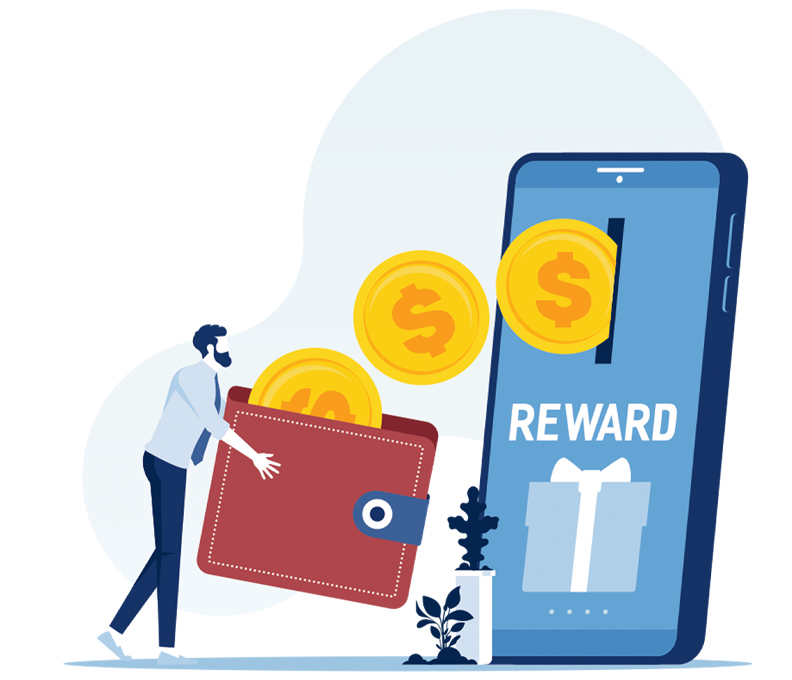Burned Out
Constant long-haul travel can have a serious impact on your mental well-being – but there are ways to minimize your stress levels
September 30, 2019


Modern international travel can feel like a series of hurdles to negotiate, whether it’s the late arrival of your airport taxi, unexpected traffic jams and flight delays, or just the sequential set of queues, from check-in, bag drop, security, lounge access and boarding to baggage collection and passport control. In between periods of stress, there are periods of boredom, often combined with opportunities to over-drink or eat.
Throw in jet lag, disrupted sleep, feelings of loneliness, disconnect from colleagues and guilt at leaving loved ones, and it’s no surprise that a quarter of frequent travelers have experienced mental health issues such as depression and anxiety, according to a survey by the International SOS Foundation and Kingston University.
Of course, it’s not only frequent travelers who experience work-related stress. According to the UK’s Health and Safety Executive, work-related stress, depression or anxiety accounts for 44 percent of work-related ill health and 57 percent of all working days lost to ill health. But the Kingston research reveals frequent travel presents an additional element of pressure – 45 percent of the 200 frequent travelers surveyed reported higher stress levels than normal while on work trips. And 31 percent said they experienced emotional exhaustion – one of the major risk factors of burnout – on a weekly basis.
Stages of Burnout
Burnout is defined as a “syndrome of emotional exhaustion, depersonalization and reduced personal accomplishment,” according to Professor Christina Maslach, the psychologist who first identified the syndrome in the 1970s.
“Burnout is an accumulative process,” says Dr. Rachel Lewis, associate professor of occupational and business psychology at Kingston University, who carried out the research for International SOS. “It starts with a reduction in factors that support our ability to cope, such as eating a balanced diet, getting quality sleep and regular exercise. If this combines with increased external demand, the result is stress. If stress is ongoing, it can lead to the first stage of burnout, which is emotional exhaustion. If this is left unchecked, stage two is depersonalization, becoming cynical and critical of both yourself and others. Stage three is reduced personal accomplishment, the feeling that you are incompetent or that you are not achieving. If that continues, you have reached burnout.”
In the initial stages, many people take a “push through it” approach. “A classic response to feelings of stress is to work harder, which just exacerbates the symptoms,” says Matthew Holman, founder of Simpila Healthy Solutions, a consultancy that addresses mental health issues in the workplace. “There is still a stigma to admitting you are struggling, and a fear that it will bring your performance and ability into question.”
According to Simpila’s Business Travel and Mental Health Survey, 80 percent of those who have experienced mental health problems have not told their employer.
Stress aside, frequent travel also has the potential to increase your workload. With differing time zones it’s easy to work a double day, picking up e-mails and calls from colleagues at home on top of the working day at your destination. “There’s this feeling among business travelers that they’re constantly on duty, answering e-mails at all times of the day, with their phones always on,” Holman says. “I used to have a team in Asia as well as America and Europe, so I was getting messages all times of the day in different regions. There never seemed to be a defined nine-to-five existence.” In the Kingston study, 73 percent said they worked longer hours while away.
Despite this, many travelers say they are still treated as if they have been on holiday by colleagues. As one frequent flier puts it: “When returning home from long trips involving multiple time zones, it used to take me two days to recover. That was in my thirties and forties. Now I’m in my fifties, it can take me up to four days to get back to a normal routine. Friends, family and some colleagues think that you are ‘so lucky’ to travel to all of these places. They do not understand what it entails.”
Lifestyle Factors
According to the Kingston University research, 76 percent say they are less likely to have a balanced diet or exercise when traveling for business, and 73 percent experience reduced quality sleep. At the same time, 46 percent say they are more likely to consume alcohol while traveling for work, and 35 percent are more likely to visit bars and nightclubs.
“Conferences and events are notoriously good at providing a world where access to free drinks and late nights is the norm,” says Holman. “And not every hotel has gym or leisure facilities or healthy menu and snack choices, or is in a suitable location for outdoor exercise.”
As Lewis explains, “Increased workload and external demands, plus decreased resilience triggered by lifestyle factors equals emotional exhaustion, one of the three component factors in burnout.”
Signs of emotional exhaustion vary from person to person, but common symptoms include sleep disruption, tiredness, lack of motivation, irritability, absent-mindedness, anger, feeling drained, a sense of dread, and a sense that something will go wrong. “The key is any behavior that is out of character. We need to treat it as a wake-up call,” Lewis says.
The standard advice for preventing travel burnout is to upgrade your seat and hotel rooms and allow time in your work schedule to decompress from trips. But not everyone has those options. As Holman says: “When you know your work is piling up, time away from the office after a trip is likely to add to your stress. And the trend for ‘bleisure,’ encouraging business travelers to tag a weekend on to trips to enjoy some relaxation or sightseeing, doesn’t work for those with families back home.”
Treating burnout is complex, says Jayne Morris, an executive coach and author of Burnout to Brilliance: Strategies for Sustainable Success (Changemakers Books).
“Typically, you reach the point where jumping ship seems to be the only option. But this is not always a viable solution. For a start, it’s hard to be your best in a job interview when you are in this state. And there is also the danger of ‘out of the frying pan into the fire,’ which happened to me ten years ago.”
Morris left a high-profile but exhausting marketing job at a major media company in search of a career with more meaning but ended up burning out. “I knew I needed a change but approached it with my usual ‘push myself as hard as I can’ approach, and signed up for a fast-track teaching program. Within a few months I was teaching teenagers in an under-resourced inner-city school, where I had very little departmental support.”
The tipping point came when Morris went to bed with flu and didn’t get up for six months. “I was diagnosed with post-viral fatigue syndrome and labyrinthitis [an inner ear infection], but in retrospect I can see it was burnout.”
As Morris found, recovery from burnout can take several months and requires a change in mindset. “I realized I couldn’t sustain a way of working that never allowed me to recover from stress or exhaustion. It’s like a wellness bank account – if there are things you are doing that deplete you, you need to regularly top it back up. Because international travel disrupts the circadian rhythm, which is crucial for underpinning all of the body’s processes, our physical resilience is lowered, which means we have an increased need for a nutritious diet, quality sleep and regular periods of relaxation.”
Switch-off Time
Putting in boundaries around work hours is also crucial, Holman says. “Most important is the ability to switch off from work when your local time-zone clock says the work day is over. Unfortunately, as we work more and more in global roles, the time merges through the day, and the ability to switch off becomes harder. Workplaces have to embrace the switch-off culture so that employees can enjoy a positive work balance.”
However without a supportive work environment, no amount of lifestyle changes will protect you from stress, Lewis says. “Meta analyses of the literature in this area show that interventions for job burnout undertaken by the individual, such as relaxation therapy or CBT [cognitive behavioral therapy], will not be successful without organizational intervention, such as making sure that all business travelers are afforded choice control over how, when and for how long they go on trips, and recognizing when they are away that they need their work covered,” she says. “We need to tackle the factors that are making people ill, not teach people how to cope with them.”
That may mean questioning whether a trip is necessary. “There does seem to be a shift happening where it is more acceptable to connect using technology rather than fly halfway around the world for a two-hour meeting, partly driven by pressure on organizations to be seen as environmentally responsible,” Morris says.
Positive Thinking
When unnecessary trips are eliminated, business travel can be a positive experience, and help you to become more engaged in your job, according to 67 percent of respondents to the Kingston survey. Conversations on the UK’s Business Traveller online forum seem to confirm that. “The major positive for me is the cultural understanding gained. It just can’t be learned in the home office,” says BT forum poster Falcon7X.
The key is checking your mindset and staying curious, believes fellow contributor Canucklad: “The predictability of my working week, planes, hotels and private cars became the mundane norm as others (colleagues, friends and family) looked on with envy. I took a lesson from this and reset my brain. Rather than seeing my destination as a means to an end, I saw it through the eyes of those left behind – a place to be explored. Every week I’d set myself a challenge to do something different. By breaking my routine, I got back my mojo and looked forward to the next trip.”
SPOT THE SIGNS
Key symptoms of chronic stress, a risk factor for burnout, are:
•Chronic exhaustion and trouble getting to and staying asleep
•Noticeable personality changes such as higher levels of irritation and anger
•Withdrawing from social and work relationships
•Finding everyday environments overwhelming
•Losing your normal ability to concentrate
•Loss of pleasure in things you used to enjoy
•Increased reliance on alcohol or drugs




